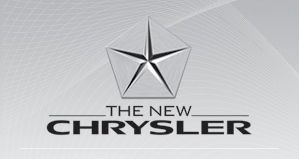In the original version of the movie “The Thomas Crown Affair,” the lead character, played by Steve McQueen sells a building to a group of investors. After the deal is done and the documents signed, one of the buyers says, “Aren’t you going to wish us luck, Mr. Crown.” To which Crown replies, “You overpaid.”
That seems to be the thrust of the earnings report filed yesterday by Daimler, A.G. which still retains a 20% interest in Chrysler and sold the balance of its holdings to Cerberus last year. The report covers the Chrysler earnings for 2007, covering the period up to the sale of Chrysler to Cerberus.
And it ain’t pretty. But it does offer a remarkable glimpse of the thinking behind the Chrysler sale to Cerberus Capital, and the relative bargaining acumen of the players.
According to the report, in the last five months of 2007, Chrysler lost a stunning $6.8 billion dollars.
(more after jump)
The losses at Chrysler were so huge that Daimler regarded the company as worth a mere $4.2 billion at the end of 2007 – $6.8 billion less than the value that Daimler attributed to the company in August of that year.
Chrysler, LLC – the Cerberus version of the company – was quick to dispute the Daimler figures, contending that the figures were misleading because Daimler employs “international” accounting standards, which are different than the generally accepted accounting principles followed by U.S. corporations. However, the Daimler filing is one that is required by United States securities laws, due to the size of Daimler’s stake in Chrysler, and accounting experts quoted by the Detroit Free Press indicate that the reports are, in fact, highly relevant in determining the financial status of the Chrysler operations and accurately reflect earnings.
In reporting this story, the Detroit Free Press also stated that internal Chrysler figures which it had viewed earlier showed that Chrysler had lost $3 billion in the first nine months of 2007, of which $900 million might not have been reported as a loss under American accounting rules. Daimler’s report indicated that most of the Chrysler loss occurring in the last five months of 2007 actually occurred in the fourth quarter of 2007, i.e., the last nine months of the year.
Chrysler has been claiming that his has made an operating profit in 2008, but those numbers don’t take into account other costs associated with the company’s operations, or those of Chrysler Financial, including employee buy-outs and other expenses. Chrysler is believed to have spent $1.3 billion to fund the 12,000 employee reduction which it announced this past February.
If it is true that Chrysler is making an “operating profit” in a real sense of the term – something which isn’t possible to determine objectively because it is not known what expenses Chrysler is including and excluding in making that claim – that would certainly be a good sign for the company.
But, unlike other automakers, the overall losses of the company are highly relevant to the ability of the corporation to survive. The buy-out by Cerberus effectively used up all of the ability Chrysler has to raise additional capital through borrowing. Cerberus, having taken the company private, could hardly turn around and take it public at this point, so Chrysler is forced to either survive or fail with the money it has now. If it eats that up, there is little likelihood that Cerberus can raise more. Investment banks who funded the original buy-out are still trying to peddle the bonds to long-term investors, without success except at deep, deep discounts.
The real problem, however, is that Cerberus may have grossly overpaid for Chrysler. If the Daimler valuation of Chrysler at the end of 2007 are close to accurate, Cerberus paid about three times what the company was worth to acquire Chrysler. In that context, with Kirk Kerkorian having set his sights on Ford in recent days, it’s interesting to note that the Daimler valuation of Chrysler at the end of 2007 is just about the same as the price Kerkorian had offered for the company when Daimler initially put Chrysler up for sale, a figure which was swamped by Cerberus’s ultimate offer.
In the last analysis, the Daimler report strongly suggests that Cerberus got snookered. Daimler not only viewed Chrysler as having lost more than half its total value in a matter of months, but was facing continuing huge losses at the company that would diminish its value even more.
Much like a car owner who discovers that his vehicle is going to require a new engine and transmission, the numbers point to a Daimler management desperate to unload its problems on someone else. Had it retained ownership of Chrysler, Daimler would have been force to either continue to absorb the huge ongoing losses at the company or close it. Closing Chrysler, however, would have cost a mint, as DaimlerChrysler would have been faced with enormous costs associated with pension and health care liabilities ongoing indefinitely into the future, as well as well as the losses associated with writing off plant and equipment which would no longer have utility and, hence, no longer have value.
Instead, Daimler dumped all of this on Cerberus, at the minor cost of agreeing to loan the new Chrysler an additional $2 billion, should it need it.
At the end of “The Thomas Crown Affair,” the McQueen character is on an airliner, first class, on his way to Switzerland and his numbered account. The last frames of the movie show him quietly and blissfully smiling.
Bet Dr. Z’s been doing a lot of that lately.

